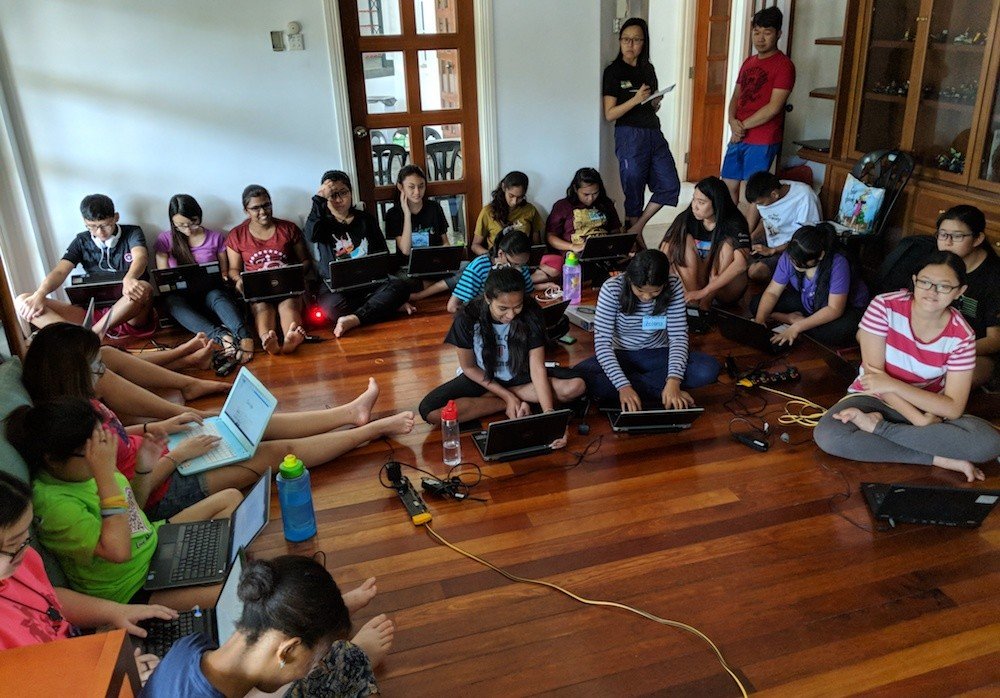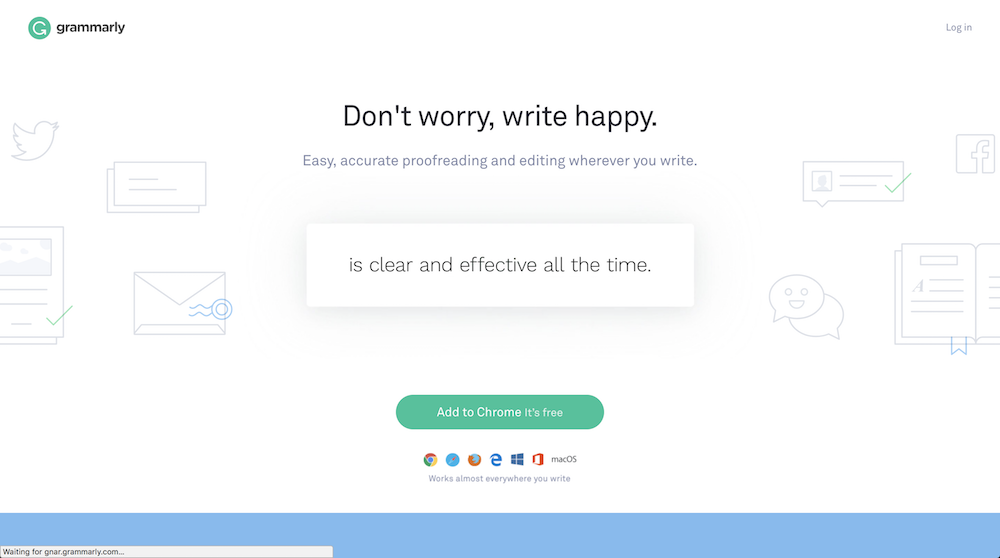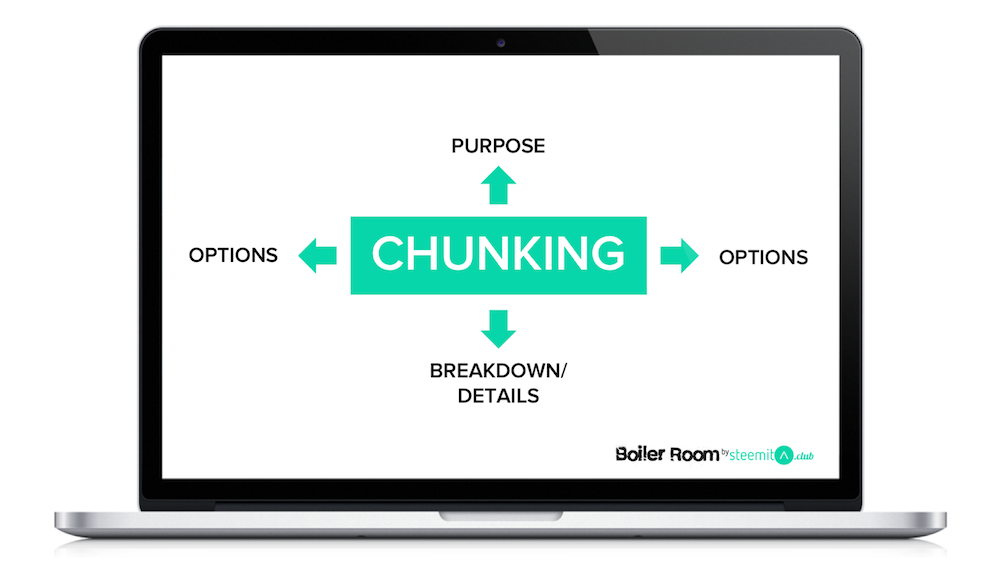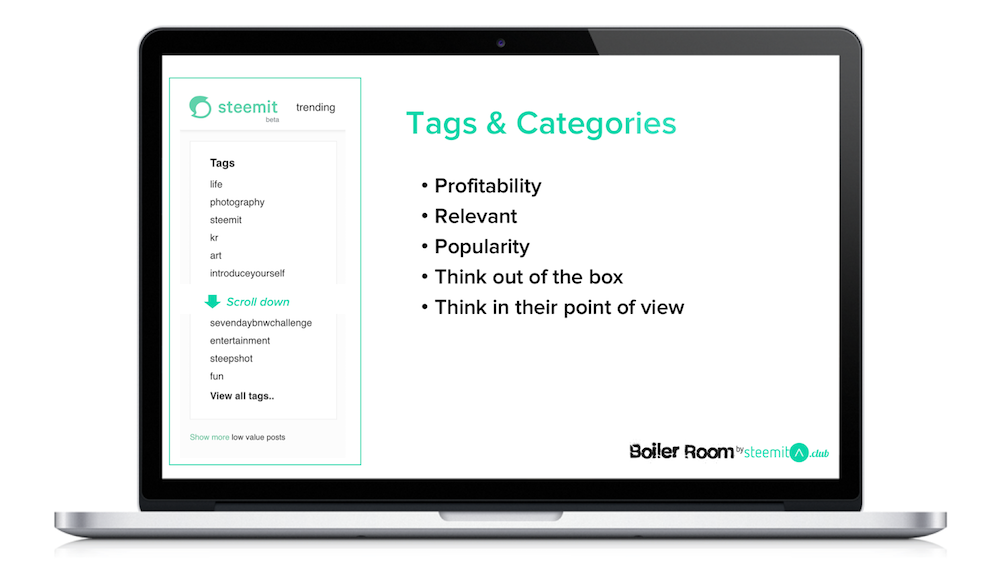
A Day to be Grounded, Physically and Psychologically
Contents for Day 3:
- Recap, Q&A on previous days' contents
- Fixing citations and missing links
- Honesty - The Trust Gap filled by the Blockchain
- Plagiarism & the Price to Pay
- Identifying Keywords, Paraphrasing
- Mav's 25-25-25 Secret to Writing
- Chunking - Up, Sideways and Down
- Being Smart about Tags - Popularity, Relevancy & Profitability
- Hello Grammarly
- Hello AnswerThePublic
- Hello The Most Dangerous Writing App
- Prioritization, Teamwork and Too Many Cooks Spoiling the Soup
Assignment for Day 3:
- Complete Day 3's post, work on Day 4's.
- Continue Pixar In a Box from yesterday.
Key Learnings:
One of the girls had to learn a hard lesson of being flagged by @cheetah. She copied the contents of Wikipedia for her post. Though unfortunate, it was a good opportunity to teach a valuable lesson to the class.
We spoke about honesty, and how the blockchain is supposed to be bridging the gap of trust. The class was reminded to watch the earlier TED Talk by Richie Etwaru, assigned to them on Day 1. Honestly, only one of the girls watched it, and I was quite surprised that she could remember some of the highlights of the talk, and also recap her understanding on it.

Coincidently, the organisers were also having a discussion with me on how to prevent the kids from withdrawing their SBDs for their personal purchases (they were supposed to pledge an percentage of the amount back to the home). My conclusion with them was simple: the kids are smart, and they have Google. Even if I don't teach them how to withdraw, they can easily Google it.
Rather, it is easier to teach them to value of trust, honesty and responsibility, and how the blockchain logs all their transactions anyway.
With the serious talk with the kids out of the way, I showed the kids how I, too, found out about them plagiarising contents from the web. I showed them Grammarly, and how on top of using it as a tool to improve their writing, but also as a plagiarism checking tool. With that, I'm glad the kids learned their lesson of not copying contents 100% off the web. That's just plain stealing!

Which led me to my next point: learning how to pick up keywords in any article, and paraphrasing it. Essentially, I gave them a crash course of spinning articles, but with brains and comprehension (not with something like Spinbot).
We had to backtrack a little on image linking and citing sources, which was where I taught the kids some handy Markdown languages.
The first content we touched on was the concept of Chunking, which was demonstrated the day before. With a "car" used as an example, essentially:
- Chunking Up helps identify the purpose of something, in this case a car. Everyone agreed a car is used as a means to get from Point A to Point B.
- Chunking Sideways helps identify options and variety. For the case of getting from Point A to Point B, the kids said that instead of using a car, they can bike, fly, ride a bus, and for the adventurous Joe, even walk.
- Chunking Down helps break down larger topics into smaller ones. In the case of the car, the kids identified the many different type of cars (sports, luxury, sedan, 4x4), different brands (Honda, Proton, Toyota, Ferrari) and different purposes (family, speed, fuel-saving).

The purpose of teaching them Chunking, especially Chunking Down, is so they will not easily run out of topics to write on.
I then went on to show them AnswerThePublic.com, which I suggested they use as a means to brainstorm ideas to write about. They all agreed that it is a great tool for research too.
Some of the kids professed that they spent up to 3 hours creating a post, and I applaud them for their hard work. It is evident in the quality of their post. I decided to teach them something to short cut their time, by streamlining the writing process. That's where my 25-25-25 Method of Writing comes in.

Essentially, the first 25 minutes is to be spent on researching on the topic. Why put a time limit? Well, if there are no time limit, anyone would be a Youtube 3 hours later, watching the trailer to Avengers 5!
Setting a time limit focuses the mind to only look for relevant contents to write on, and to also not waste time with distractions. After every 25 minutes, it's recommended to take a 5 minute break before the next task, which is…
Writing! Here, I introduced them to my old buddy, the Most Dangerous Writing App. They all took a few minutes to think of their topic, set the timer to three minutes, and started typing away. If you haven't tried this app before, check out this extended post I wrote a while back.

But here's a nutshell of the app: Once you hit start, the moment you slow down your typing, you will notice contents you've typed fading off. Pause for too long, and the contents just disappear! No copy-and-paste, no cheating. The idea is simple: free flow writing. Screw the errors, the key to writing is to write, not to think.
Some of the kids failed the first time, which is expected, but they enjoyed the process. We decided to go for round 2, but this time, it's on Hardcore Mode. A lot tougher, with all the previous rules in place and with one new, killer one - you can only see the letter you typed. The rest are blurred out!
We did a 3 minute exercise on hardcore mode, and the funny thing is? The failure rate was much lesser, and they wrote a lot more than round 1. This showed that once the mind stop judging and correcting the contents, ideas will flow more freely.
For the last 25 minute, which is Editing, I introduced them to Grammarly. Free and easy to use, the kids were quick to learn from their grammar mistakes and how to improve their overall writing.
We also spent sometime to look at proper ways to Tag/Categorise the posts they did, with the focus on relevancy, popularity and profitability. I gave them the analogy of a swimming pool. High profitability means a big pool, and high popularity means how crowded the pool is. They were quick to discover that sometimes some pools may be smaller, but there are lesser people in it. Smart!
We ran through the list of trending tags, and the kids were able to link their topics to the right tags. Personally, I was quite amazed that they were so fast in picking that up.

As I reflect back on today, though I covered a lot of tools to help them generate topics, breakdown ideas, identify profitable tags and free-flow writing, the personal one was the lesson on Trust. It wasn't planned in the schedule, rather impromptu, but the timing was write. It's always good to get the attitude right at the start, rather than correcting it later.
I am reminded of a metaphor my Ma used to drill into me when I was younger:
When trying to straighten the bamboo, do it when it's still at it's shoots. Same goes when trying to ground someone's attitude.

Check out the previous post(s) in this Steemit Bootcamp for Underprivileged Kids Series:
- Day Zero | The lead-up and Preparation
- Day One | Introduction to Steemit, the kids' first #Introduceyourself post, and no way a combined SBD133 of upvotes on the very first day!?!!?
- Day Two | Interests, Format & Structure
Wait, why's Mav posting on Steemit nowadays?
Well, unlike other blogging and social media platform, Steemit is the only platform that allows me to earn cryptocurrency when I engage with it. Yup, one Steem is about USD7, and you, too, can earn Steem Dollars every time you:
- Create content (articles, blog posts, podcasts, videos, photos)
- Upvote (like) other people contents
- Comment on other people's posts
- Have discussions, share opinions etc!
Yup, basically it's the very same thing you're doing on Facebook, Twitter, Instagram etc all along!
The only difference? For once you can earn a nice income on the side!
Sign up for a free Steemit account, and you can thank me by coming back and upvoting this article. And guess what, you will earn Steem too for doing that! #awesome


